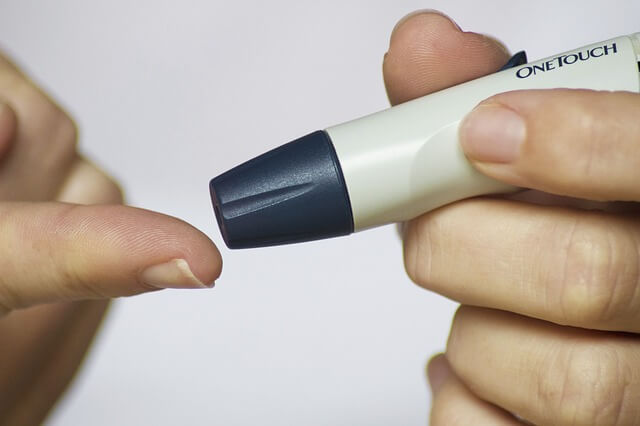Learn how to understand diabetes and its effect in the body. Check out the article we found over at Top 10 Home Remedies.
Diabetes is a cluster of disorders characterized by high blood sugar levels that persist over a long period. It is one of the most common disorders of our time.
According to the International Diabetes Federation, 387 million people worldwide were living with diabetes by the year 2014.
In the U.S. alone, 29.1 million people have diabetes, out of which 8.1 million remain undiagnosed, according to the Centers for Disease Control and Prevention.
Understanding How Your Body Works
Glucose is a type of simple sugar found in food. It is a major source of energy and is used by every living organism.
When you eat food, your digestive system breaks it down into glucose in the blood so your cells can extract energy from it and recharge themselves. At this point, the glucose is also called blood sugar.
Every cell of every organ in your body, be it the muscles, kidneys or the brain, relies on energy from glucose to perform its functions.
But how does this glucose reach the cells?
Insulin is a hormone secreted by the pancreas that performs the crucial task of delivering glucose to the different cells.
So, how does all this relate to diabetes?
Understanding Diabetes
There are two major types of diabetes.
Type 1 Diabetes
- In Type 1 diabetes, the cells of the pancreas responsible for making insulin either fail to do so or create very little.
- This keeps the glucose unused in the blood, and can ultimately cause an overload of blood sugar.
- It is mostly diagnosed in young adults and children.
Type 2 Diabetes
- This is the most common type of diabetes. Ninety percent of the adults suffering from diabetes have Type 2 diabetes.
- Type 2 diabetes occurs when your pancreas produces the insulin, but your cells are unable to use it properly. In medical terminology, this is called insulin resistance.
- Initially, the pancreas responds by making more insulin to try to get the cells to use it properly. However, over time, the pancreas fails to keep up. This may ultimately cause excess blood sugar.
Excess blood sugar due to either type of diabetes is a major cause for concern. Uncontrolled diabetes can allow the sugar to remain in the blood for too long and damage other organs.
Here is how uncontrolled diabetes can damage your heart, eyes, kidneys, nerves, teeth and more.
Heart
Diabetes causes a 2- to 4-fold increase in a person’s risk of having a heart attack, heart failure, coronary artery disease (artery blockage) and death, according to a 2011 study published in Trends in Cardiovascular Medicine.
People with diabetes are likely to have a heart attack or heart failure at a younger age, the study also notes.
High blood sugar levels in the heart for a prolonged period can irritate and damage the insides of the arteries that supply oxygen-rich blood to heart.
This triggers an accumulation of cholesterol and fat deposits in the arteries, eventually narrowing them and obstructing blood flow.
This is called coronary artery disease (CAD). It can develop for multiple reasons other than diabetes. However, it develops much faster in diabetic patients.
Over time, the arteries may become completely blocked and deprive the heart of oxygen, causing a heart attack.
While diabetes itself is a risk factor for heart disease, other diabetes-associated symptoms could also cause heart disease:
- High LDL cholesterol: Low-density lipoprotein (LDL) cholesterol is the ‘bad’ cholesterol. Diabetes usually accompanies a case of heightened LDL cholesterol in the body that settles in the arteries and causes CAD.
- Abdominal obesity: Fat accumulated around the abdomen also increases the production of bad cholesterol, causing CAD.
- High blood pressure: Pressure in the blood vessels going through the heart causes a strain and damages the vessels, increasing the risk of CAD and a heart attack.
Kidneys
Kidneys contain tiny filters that capture waste material from the blood and discharge it from the body through urine.
The blood that comes for filtration also contains important substances like proteins and red blood cells. Since the kidneys’ filters are so minuscule in size, they do not filter these useful substances and they remain in the blood and benefit the body.
However, diabetes damages the filters over time, causing a complete failure of the filtration process. This, in turn, allows the proteins in the blood to escape to the urine.
Albumin is one such protein that passes through to the urine. A dangerous excess of the same is called microalbuminuria.
Microalbuminuria could indicate an early stage of kidney failure. Diabetic nephropathy (diabetes-induced kidney disease) is the most prevalent cause of end stage kidney disease, according to a 2001 study published in the Journal of the Royal Society of Medicine. This is when your kidneys fail completely and are no longer able to support you.
It could take years for kidney damage to occur in diabetic patients. High blood pressure, another symptom of diabetes, contributes significantly to the progression of kidney failure.
Eyes
The eyes are one of the most sensitive organs of your body.
People with Type 1 and Type 2 diabetes face a high risk of contracting blindness, according to a 2015 study published in the British Medical Journal.
Diabetes can cause several eye disorders that can have debilitating and irreversible repercussions.
- Diabetic retinopathy: High blood sugar damages the blood vessels in the retina, a tissue that is located at the back of the eye. This can cause vision damage, vision loss and blindness.
- Diabetic macular edema: This usually occurs after retinopathy and is the most common cause of vision loss. In macular edema, a fluid fills up in a part of the retina called the macula that enables straight-vision crucial to reading, writing, driving and identifying faces.
- Cataracts: In this disorder, the natural lens of the eye becomes cloudy. It is the most common cause of blindness, and usually occurs in people 40 years of age and above. People with diabetes are at a 2 to 4 times higher risk of developing cataracts than those without the underlying disorder.
- Glaucoma: This disorder is characterized by a pressure buildup on the optic nerve that connects the eye to the brain, which eventually damages it. It can destroy vision permanently.
Next Article: The Fruit That Kills Diabetes & Stops The Spread Of Breast Cancer
Read full article: How Uncontrolled Diabetes Damages Your Heart, Eyes, Kidneys, Nerves, Teeth and More







Recent Comments